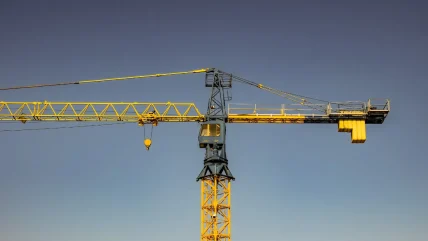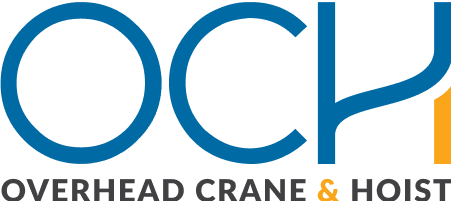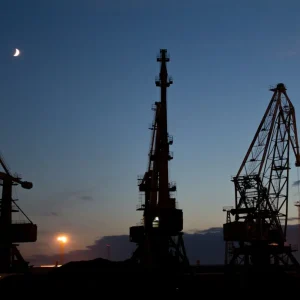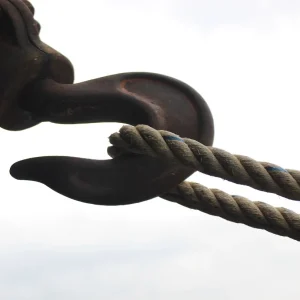
The crane builders, hoist, and industrial lifting equipment industry is a critical segment within the broader manufacturing and construction sectors. These industries provide essential machinery for various applications, ranging from construction and infrastructure projects to manufacturing and logistics. However, economic downturns pose significant challenges to this industry, impacting production, sales, and overall market dynamics. This article examines the effects of economic downturns on the crane builders, hoist, and industrial lifting equipment industry in North America, focusing on key aspects such as market trends, financial performance, and strategic responses.
Market Trends and Economic Downturns
Economic downturns, characterised by reduced economic activity, lower investment, and decreased consumer spending, directly influence the demand for industrial machinery. During periods of economic decline, construction projects are often delayed or cancelled, leading to a reduced need for cranes and lifting equipment. Similarly, manufacturing activities slow down, resulting in lower demand for hoists and other industrial lifting devices.
Impact on Sales and Revenue
The most immediate effect of an economic downturn is a decline in sales and revenue. For instance, during the 2008 financial crisis, the global construction machinery market saw a significant drop in demand, which directly affected crane and hoist manufacturers. Companies reported reduced orders, leading to decreased production volumes and lower revenues. According to industry reports, the North American market experienced a similar trend, with a notable contraction in sales during this period.
Production and Employment
Economic downturns also impact production levels and employment within the crane and hoist industry. As demand declines, manufacturers often scale back production to align with the reduced market needs. This scaling back can result in temporary plant closures, reduced working hours, and, in severe cases, layoffs. The ripple effect extends to the supply chain, affecting suppliers of raw materials and components used in the production of cranes and hoists.
Case Study: The 2008 Financial Crisis
The 2008 financial crisis provides a valuable case study for understanding the impact of economic downturns on the crane and hoist industry. During this period, major manufacturers like Terex Corporation and Manitowoc Company faced significant challenges. Terex Corporation, for example, reported a substantial decline in sales, leading to restructuring efforts and workforce reductions. Similarly, Manitowoc Company experienced a sharp drop in demand, prompting cost-cutting measures and a focus on maintaining financial stability.
Strategic Responses to Economic Downturns
In response to economic downturns, companies within the crane and hoist industry adopt various strategies to mitigate the adverse effects and position themselves for recovery. These strategies include cost-cutting measures, diversification, innovation, and exploring new markets.
Cost-Cutting Measures
One of the primary responses to reduced demand is cost-cutting. Companies often implement measures such as workforce reductions, operational efficiencies, and renegotiation of supplier contracts to lower expenses. For example, during the 2008 financial crisis, many manufacturers focused on reducing overhead costs and optimising production processes to maintain profitability.
Diversification and Innovation
Diversification of product offerings and innovation are crucial for sustaining business during economic downturns. Manufacturers may expand their product lines to include more versatile and cost-effective equipment. Innovation in technology, such as the development of smart cranes and hoists with advanced features like remote monitoring and automation, can also provide a competitive edge. These innovations not only meet the evolving needs of customers but also open up new revenue streams.
Exploring New Markets
Economic downturns in one region may be offset by growth in another. As such, companies often look to expand their presence in emerging markets where economic conditions may be more favourable. For North American manufacturers, this can mean increasing exports to regions like Asia and Africa, where infrastructure development and industrialisation are driving demand for lifting equipment.
Government Policies and Support
Government policies and support play a significant role in helping the crane and hoist industry navigate economic downturns. During periods of economic hardship, governments may introduce stimulus packages, infrastructure investment programmes, and tax incentives to boost economic activity and support key industries. In North America, federal and state governments have historically implemented such measures to stimulate growth and mitigate the impacts of economic recessions.
Stimulus Packages and Infrastructure Investment
Stimulus packages aimed at infrastructure development can provide a much-needed boost to the crane and hoist industry. For instance, the American Recovery and Reinvestment Act of 2009 allocated significant funding for infrastructure projects, which helped revive demand for construction machinery, including cranes and hoists. Such government initiatives create opportunities for manufacturers to secure contracts and sustain production levels.
Tax Incentives and Financial Assistance
Tax incentives and financial assistance programmes can also alleviate the financial burden on manufacturers during economic downturns. These measures may include tax credits for research and development, subsidies for new technology adoption, and low-interest loans to support operational expenses. By reducing the financial strain on companies, governments can help maintain industry stability and prevent large-scale layoffs.
Long-Term Outlook and Industry Resilience
Despite the challenges posed by economic downturns, the crane and hoist industry has demonstrated resilience and an ability to recover over time. The industry’s recovery is often driven by renewed investment in infrastructure, technological advancements, and the cyclical nature of economic activity.
Technological Advancements
Technological advancements continue to play a pivotal role in the industry’s long-term outlook. The integration of digital technologies, such as the Internet of Things (IoT) and artificial intelligence (AI), is transforming the way cranes and hoists are operated and maintained. These innovations enhance operational efficiency, reduce downtime, and improve safety, making the equipment more attractive to customers even during economic downturns.
Cyclical Nature of Economic Activity
The cyclical nature of economic activity means that downturns are often followed by periods of recovery and growth. As the economy rebounds, construction and manufacturing activities typically resume, leading to increased demand for cranes and hoists. Manufacturers that have maintained financial stability and invested in innovation during downturns are well-positioned to capitalise on the recovery phase.
Conclusion
Economic downturns present significant challenges to the crane builders, hoist, and industrial lifting equipment industry in North America. Declines in sales and revenue, reduced production levels, and workforce reductions are common consequences. However, through strategic responses such as cost-cutting, diversification, innovation, and exploring new markets, companies can mitigate these impacts and position themselves for recovery. Government policies and support also play a crucial role in stabilising the industry during economic hardships. Despite the difficulties, the industry’s resilience, driven by technological advancements and the cyclical nature of economic activity, ensures that it can weather economic downturns and emerge stronger in the long term.






